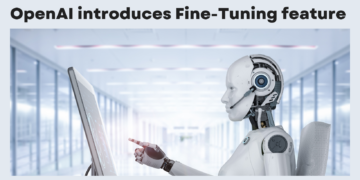Can we meet Artificial Intelligence’s (AI) demand for electricity? The computing power needed to keep AI, especially Generative AI, functional is huge. The increasing demand for AI means increasing computational power, which needs more electricity. This is putting a great strain on power grids worldwide, especially if we consider the infrastructure capacity and the need to have backups for potential blackouts. What does this mean for the world, especially now that more companies are adopting Generative AI? How do we meet the demand?
How Much Energy Does Generative AI Need?
Generative AI systems are built on vast neural networks trained on massive datasets. Every interaction with these systems, from generating realistic images to composing creative text, requires the entire network to be activated. Unlike specialized software designed for specific tasks, generative AI lacks efficiency. According to Dr. Sasha Luccioni of Hugging Face, a machine learning company, “Generative AI is wildly inefficient from a computational perspective,” potentially consuming 33 times more energy than task-specific programs.
This inefficiency translates into a significant energy burden. Data centers, the hidden powerhouses that store and process information for the internet and AI, are the unseen culprits behind this growing demand. Global data centers currently consume a staggering 460 terawatt hours (TWh) of electricity annually, and the International Energy Agency (IEA) predicts this number will double by 2026, reaching an amount equivalent to Japan’s entire electricity consumption.
Real-World Consequences
The consequences of this spiraling demand are already being felt. Countries heavily reliant on data centers are facing the brunt of the pressure. In Ireland, for instance, data centers account for nearly a fifth of the nation’s electricity usage, a number projected to rise significantly. This growth comes at the expense of domestic energy consumption, straining the grid and raising concerns about future blackouts.
Similar concerns are echoed by National Grid, the operator of the electricity grid in the UK. They predict a six-fold increase in data center energy demand within the next decade, driven largely by the rise of AI. While the electrification of transport and heating is expected to require even higher energy volumes overall, the rapid pace of growth in data center consumption is unsettling.
In the United States, utility companies are feeling the pinch. They face a dual challenge: rising data center demands and a resurgence in domestic manufacturing spurred by government policies. This situation has prompted some states to reconsider tax breaks previously offered to data center developers, as the strain on local energy infrastructure becomes increasingly evident.
How are Companies Trying to Fix this?
Amidst these concerns, a glimmer of hope emerges from advancements in hardware technology. Companies like Nvidia are developing new chips specifically designed for tasks like generative AI, promising significant improvements in energy efficiency. Their recently launched Grace Blackwell supercomputer chips boast the potential to condense the training of massive AI systems into shorter periods while consuming considerably less power.
However, even with these advancements, the sheer volume of data processing required by generative AI systems necessitates significant energy consumption. This reality encourages data center operators to prioritize locations with access to cheap and renewable energy sources like wind farms. Unlike applications with critical response times, latency (the delay in communication) is less crucial for generative AI, allowing for more flexibility in data center placement.
What Does the Future Look Like for Generative AI?
The future of data centers and generative AI hinges on a multi-pronged approach to address the looming energy crisis. Here are some key areas of focus:
- Technological Advancements: Continued innovation in AI hardware and software is essential. Optimizing algorithms and developing energy-efficient chips are crucial for reducing the carbon footprint of generative AI.
- Renewable Energy Sources: Powering data centers with renewable energy like wind and solar power is the cornerstone of sustainable growth. Transitioning away from fossil fuels is vital to mitigate the environmental impact.
- Policy and Regulation: Governments might need to adapt their policies. Re-evaluating tax breaks and implementing regulations that incentivize responsible energy usage by data centers could play a crucial role.



























